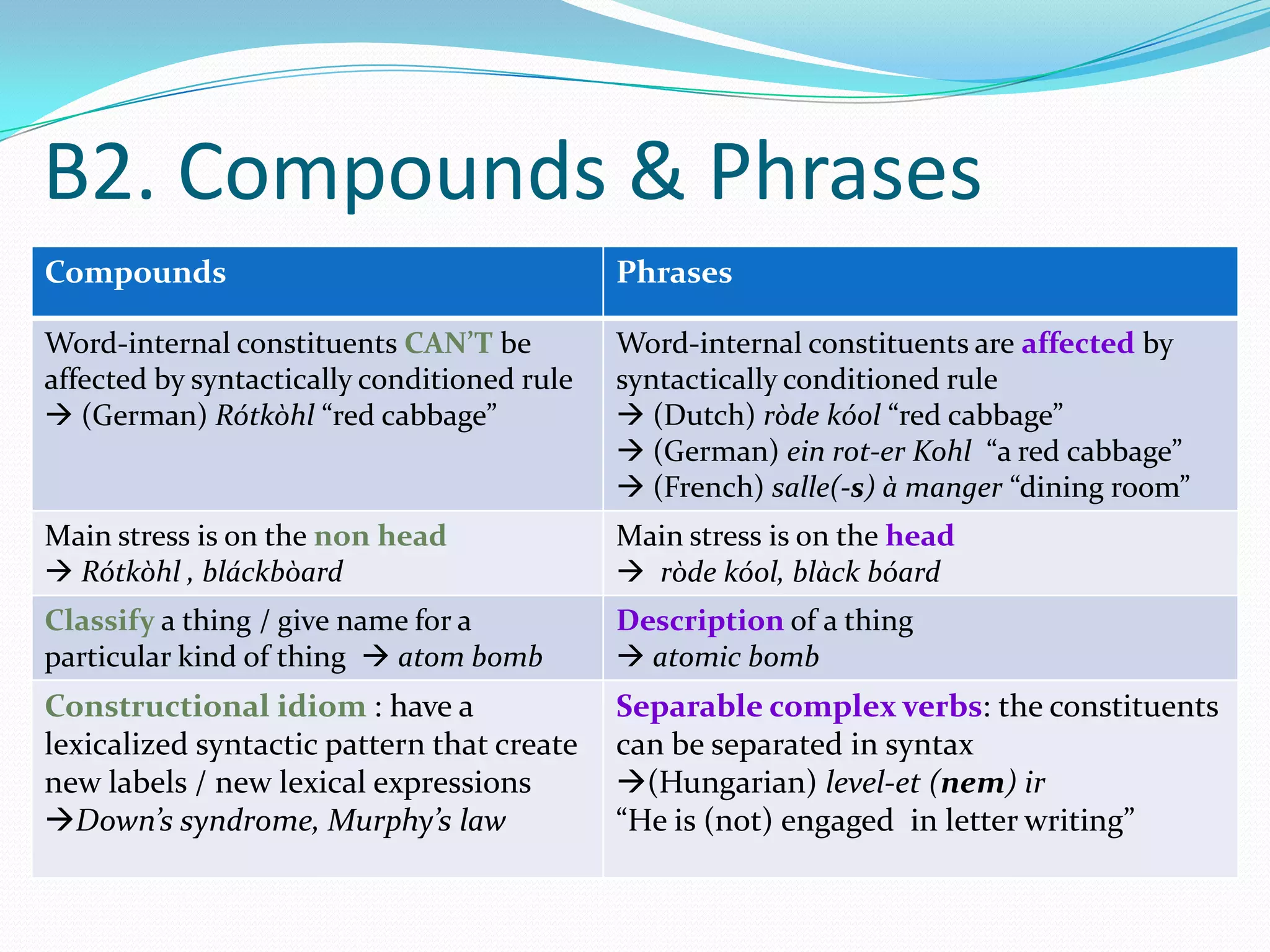The document discusses word formation processes, focusing on derivation and compounding in language. It elaborates on categories, templates, constraints, productivity, affix ordering, and the different types of compounds, illustrating with examples from Dutch and other languages. Key aspects include how affixes and word combinations create new meanings and grammatical structures.







![A3. Constraints & Derivation
Input constraints: specific syntactic subclass
-baar drink “to drink” drink-baar Vtr A
“drinkable”
Input constraints: phonological
-aar luist[e]r “to listen” luister-aar “listener” [e]r , [e]l
duik[e]l “to tumble” duikel-aar “tumbler”
-er veeg “to sweep” veg-er “sweeper” other than [e]r , [e]l
Output constraints: prosodic restriction
?ge ?ge-ont-dek, ?ge-ont-bos, ?ge-be-loof [stressless tone+…](avoided)
Hér hér-ont-dek, hér-be-gin, hér-ge-bruik [stressed tone+… ](no problem)](https://image.slidesharecdn.com/wordformation-120912030535-phpapp01/75/Word-formation-8-2048.jpg)











